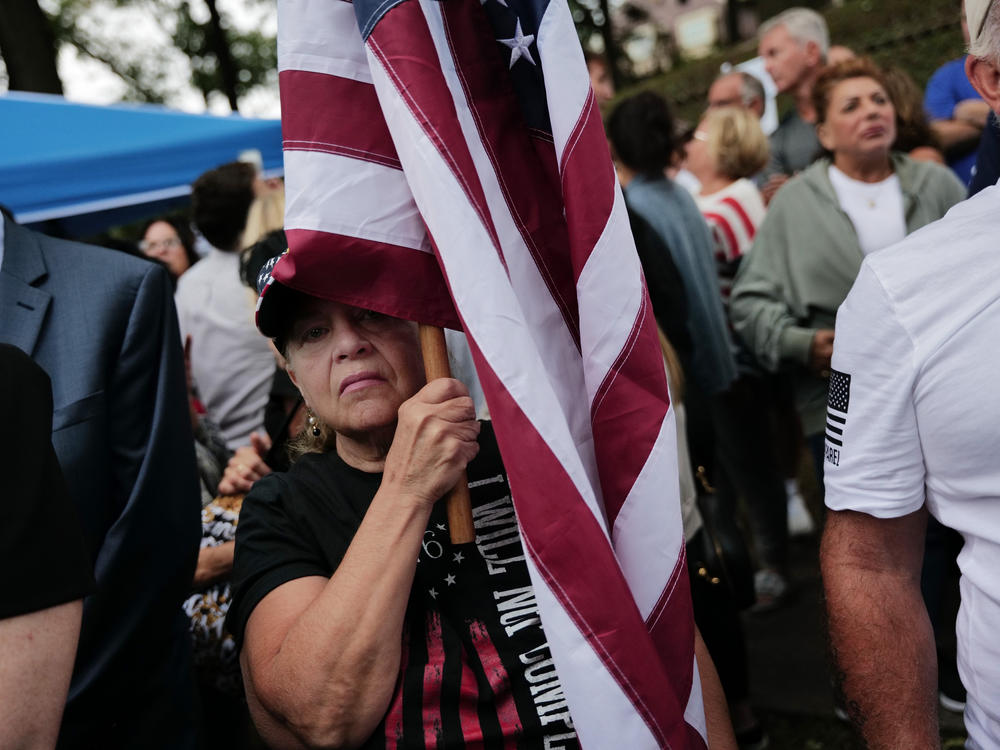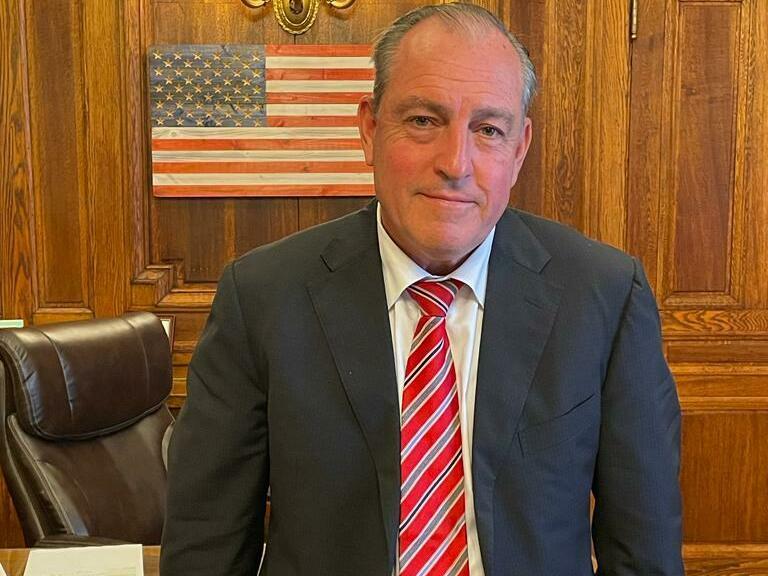Section Branding
Header Content
On N.Y.'s Staten Island, anti-immigration protests intensify as migrants stream in
Primary Content
Up until recently, an eerie recording reverberated 24 hours a day in the usually quiet Staten Island neighborhood of Arrochar: "This building is not safe for humans. The community wants you to go back to New York City. Immigrants are not safe here. "
The loudspeaker was pointed at a new migrant shelter, assembled at what was once a Catholic school. One of several shelters on Staten Island, it now houses 60 people.
A couple of years ago, this might have been unthinkable: for a city in which a third of its population is foreign-born to become one of the focal points in the national argument over immigration. But in the last year or so, New York City has received about 100,000 migrants seeking shelter.
It has scrambled to house many of those people and, for the most part, has done so without major community pushback. Until it started sending folks to predominantly Italian-American Arrochar, that is.
Staten Island has long been a conservative, working-class island in otherwise Democratic New York City. It was the only one of its five boroughs to vote for Donald Trump in 2016 and 2020.
Staten Island Borough President Vito Fossella was among those who filed suit against city government to shut the shelter down.
"These ordinary folks wake up one day, they have, you know, migrants living next door to them, there's nothing to do", he told NPR. "And we're just being told 'Tough luck.' And what we've said is Staten Island didn't cause this problem. Why are we obligated to solve the problem?"
Fossella says the city's budget can't handle taking care of so many migrants and Staten Island shouldn't have to suffer the consequences. In fact, Fossella is one of several Staten Island leaders who has supported secession.
"I know there are folks out there who think, 'Well, New York City voted for a right to shelter.' Staten Island is different. Staten Island doesn't support these concepts."
At a panini shop a few blocks from the shelter, Peter Monte agrees. He says the new shelter worries him because it's "right behind the school and it shouldn't be behind the all-girls school."
Actually, according to police statistics, the rate of sex crimes in the area is unchanged in the month since the shelter opened. But Monte says he feels uncomfortable.
"You've got girls walking around, you know, in school. It's not right."
In Port Richmond, a Hispanic neighborhood in Staten Island, the feeling is different. Michelle Molina is the executive director of El Centro Del Immigrante, a nonprofit that assists immigrants. She comes from a Uruguayan family and to her the rhetoric is upsetting. She's been hearing concerns throughout the community.
"Some people are starting to feel threatened," she said. "Because as we know, hateful remarks and hateful approaches also end in hate crimes."
In the last week, it got even more heated. A group of protesters directed their ire at a bus carrying asylum seekers onto Staten Island and 10 protestors were taken into custody.
On Tuesday, a state judge ruled that migrants have to vacate the shelter. Just outside the courthouse, a handful of neighbors clapped for Fossella.
New York City is appealing the ruling, which means those 60 people living inside get to stay, for now.
Copyright 2023 NPR. To see more, visit https://www.npr.org.


